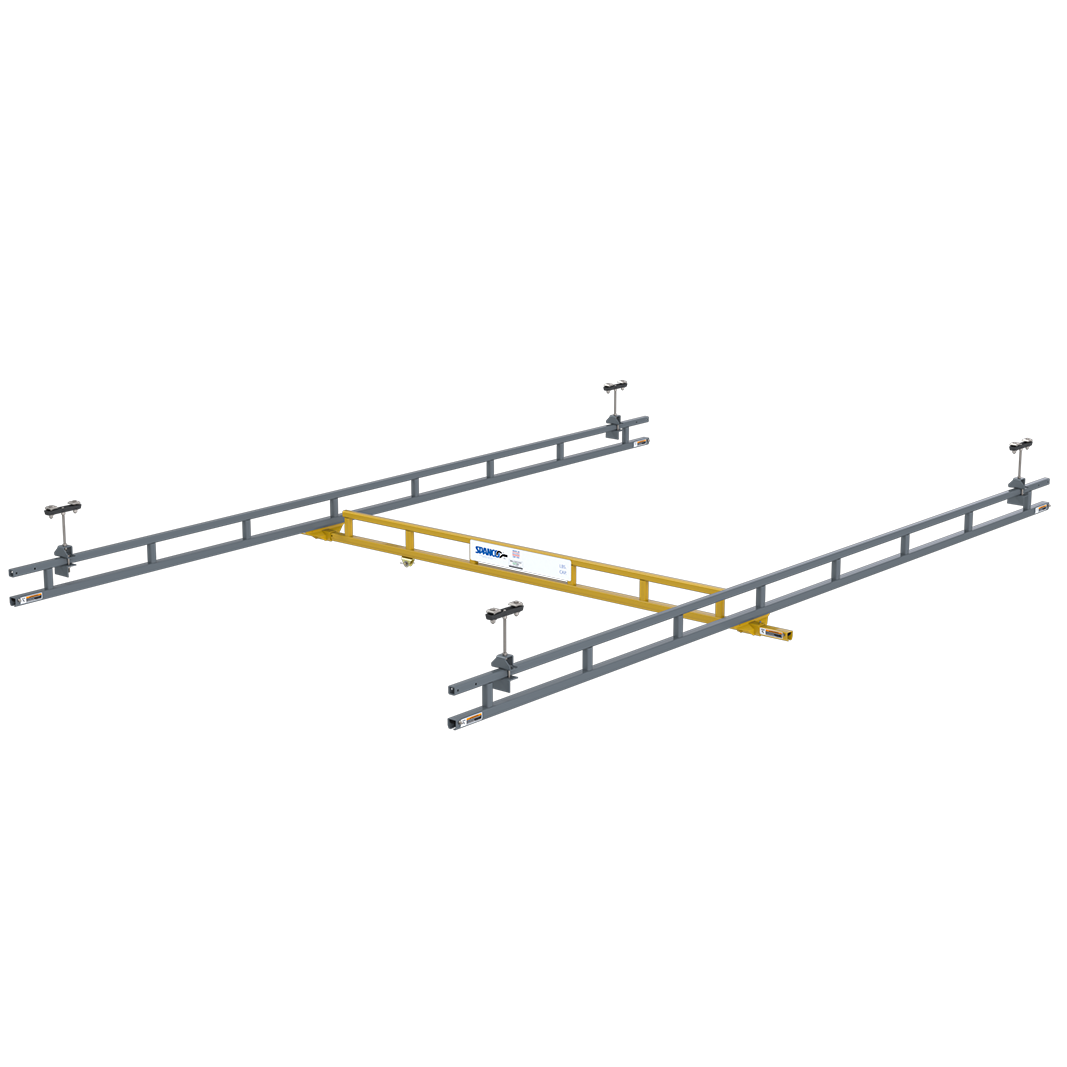Leading Energy Company Invests in a Customized Mixed-Capacity Bridge Crane to Leverage Productivity
Products used
Overview
A leading provider of innovative, reliable, and affordable equipment and services for global energy applications was looking to expand their reach beyond their established relationships with energy customers. But, they felt they needed to improve their resources and invest in better equipment for production in order to manufacture on a larger scale.
According to a production manager from the energy company, the team needed to find the right equipment for their rigorous manufacturing operations, including lift systems that are able to perform under demanding conditions for some of their more critical applications. The energy equipment they produce is, to be fair, used in some of the most critical applications themselves—from production, transportation and refining—to power generation and retail distribution. That’s why it is so important that the company use the best tools available for increased productivity and safety.
In 2012, the production manager reached out to a local Spanco third party distributor to help them determine which lift system would best meet the needs of their growing operation. The distributor recommended that they purchase and install a ceiling-mounted workstation bridge crane from Spanco. Their old lift equipment, several wall-mounted jib cranes, wasn’t providing the results they needed for growth in their manufacturing facility. And, with operations quickly growing, they needed a system that would cover their entire facility, from machining to shipping.
Solution
The energy company replaced their multiple wall-mounted jib cranes with one Spanco Ceiling-Mounted Workstation Bridge Crane that runs through their entire facility. Workers throughout the factory use the bridge crane on a daily basis to move parts and heavy materials from their machine centers. The ceiling-mounted system stretches from machining to shipping—but the most rigorous part of their operation is their lathe and machining center. That’s why the ceiling-mounted bridge crane is comprised of several individual systems that are interconnected for an ergonomic design.
They needed several systems that they could connect for a fluid lift solution because each part of their factory required different design specifications. The machining center, in specific, required a system capable of lifting up to 2,000 pounds quickly and easily. But, those 2,000 pounds weren’t resigned to one bridge. So, instead, the distributor recommended that they use mixed capacity systems throughout the factory. The machining center uses a bridge crane with two 1,000-pound capacity bridges that run on a 2,000-pound capacity runway. And, this is true for several other parts of their factory.
The receiving area, in fact, required two 500-pound bridges running on a 1,000-pound capacity runway. And, strangely, the shipping center required a much heavier system capability. According to the energy company’s Production Manager, “Bringing materials into the factory can require much less lift capacity than shipping them out. Once we ship them they need to be picked up and moved on large pallets, and each load can weigh in excess of 750 pounds.” Taking this into consideration, Spanco decided to create another mixed-capacity system that runs through their shipping department.
The shipping department needed their section of the ceiling-mounted bridge crane to be capable of handling more than one 1,000-pound capacity bridge to push their shipping initiatives to the next level. To help them with that, Spanco designed this part of their system to include two 1,000-pound capacity bridges that run on a 2,000-pound capacity runway. This allows more than one worker in the shipping department to lift loads up to 1,000 pounds all at once.
The mixed-capacity systems provide a lot of flexibility in day-to-day operations and maximize capabilities by providing extra bridges with smaller capacities in certain parts of the factory. In the end, the company was able to work with Spanco and their distributor on a step-by-step basis to ensure the fully connected system would meet their very specific needs.
Impact
According to the sales manager for their local Distributor, the factory was very pleased with the results, and have since installed large polyurethane protectors around their steel overhead beams, to prevent system damage in the future. The factory was concerned about overhead obstructions and other lift systems that are used intermittently in their factory. They’ve had damage done to one of their freestanding jib cranes in the past, and they intend to keep their new investments safe and working effectively.
Since designing and installing the full material-handling solution from Spanco, workers feel safer moving multiple loads throughout the factory. Now that their bridge crane runs from one end of the facility to another, they’ve pretty much fazed out forklifts, which were used in the past to move equipment around the factory. The forklifts proved to be too bulky and dangerous, and several of them caused severe damage to their freestanding jib crane systems.
Overall, the energy company’s Production Manager is very pleased with the results. He says that workers in the factory are extremely pleased with the improved productivity and flexibility the crane has offered them. Before, the wall-mounted jib cranes only provided 200-degrees of circular coverage in one area, making it impossible to move and transport heavy materials and equipment with out the help of other types of lift equipment.
Now, they’re able to move equipment from one end of the factory to another, all using one fluid system that’s comprised of many, multiple-capacity bridges to increase coverage, provide flexibility for lifting, and leverage system capability beyond the normal bridge crane to meet their unique needs in production and help them to grow their operations quickly and effectively.

